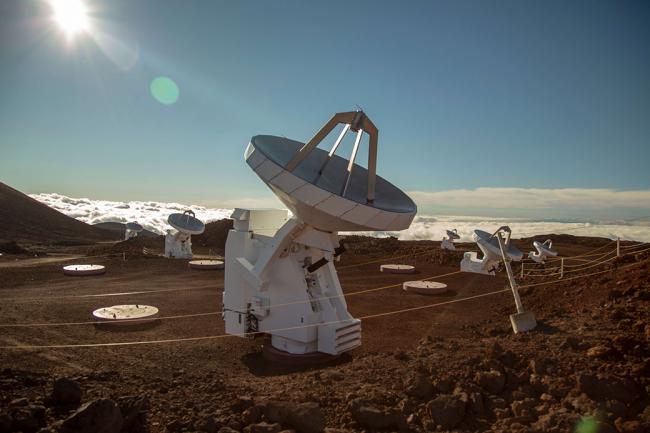
Accessing a New Population of Supermassive Black Holes with Extensions to the Event Horizon Telescope
XinYue Alice Zhang et al. 2024
In this paper, the author discusses the Event Horizon Telescope (EHT) and its potential for capturing detailed images of supermassive black holes like Sgr A* and M87*. It highlights how future upgrades and extensions of the EHT will enable direct imaging of more supermassive black holes. The study identifies new targets based on their size and brightness and makes predictions about observations using advanced models.
Using General Relativistic Radiative Transfer (GRRT) models, scaled for each target’s mass, distance, and 230 GHz flux density, the study generated simulated images to forecast trends. The outcomes reveal that these SMBHs exhibit diverse host galaxy morphologies, many with observable jets, allowing for studies of formation mechanisms in different environments.
The diversity of these SMBHs offers opportunities to explore various parameters related to accretion and jet launching mechanisms. Unlike M87*, these SMBHs typically have lower masses and are hosted in galaxies with varying stellar masses and environments, offering a broad range of Eddington ratios (parameter that quantifies the balance between outward radiation pressure force and inward gravitational force acting on material in astronomical object) and accretion disk structures. The study also examines how polarization appears on the large scale of the horizon for targets that are at steep inclines, where effects like Faraday rotation (direction of polarization of light rotates as it passes through magnetic field) could significantly influence polarized images.
The paper acknowledges limitations in current GRMHD models, such as neglecting radiative heating and non-thermal electron distributions, which are crucial for accurately modeling systems with higher Eddington ratios. Future integration of advanced observational techniques and theoretical model refinements is expected to address these limitations.
In conclusion, The study highlights the expanding capabilities of the EHT and its newer versions. By targeting a diverse set of SMBH, this research anticipates significant advancements in understanding SMBH accretion processes and jet formation across various galactic environments. The results show that it is important to expand observational methods and improve theories to cover complicated radiation and non-thermal effects in order to make future studies more accurate.

